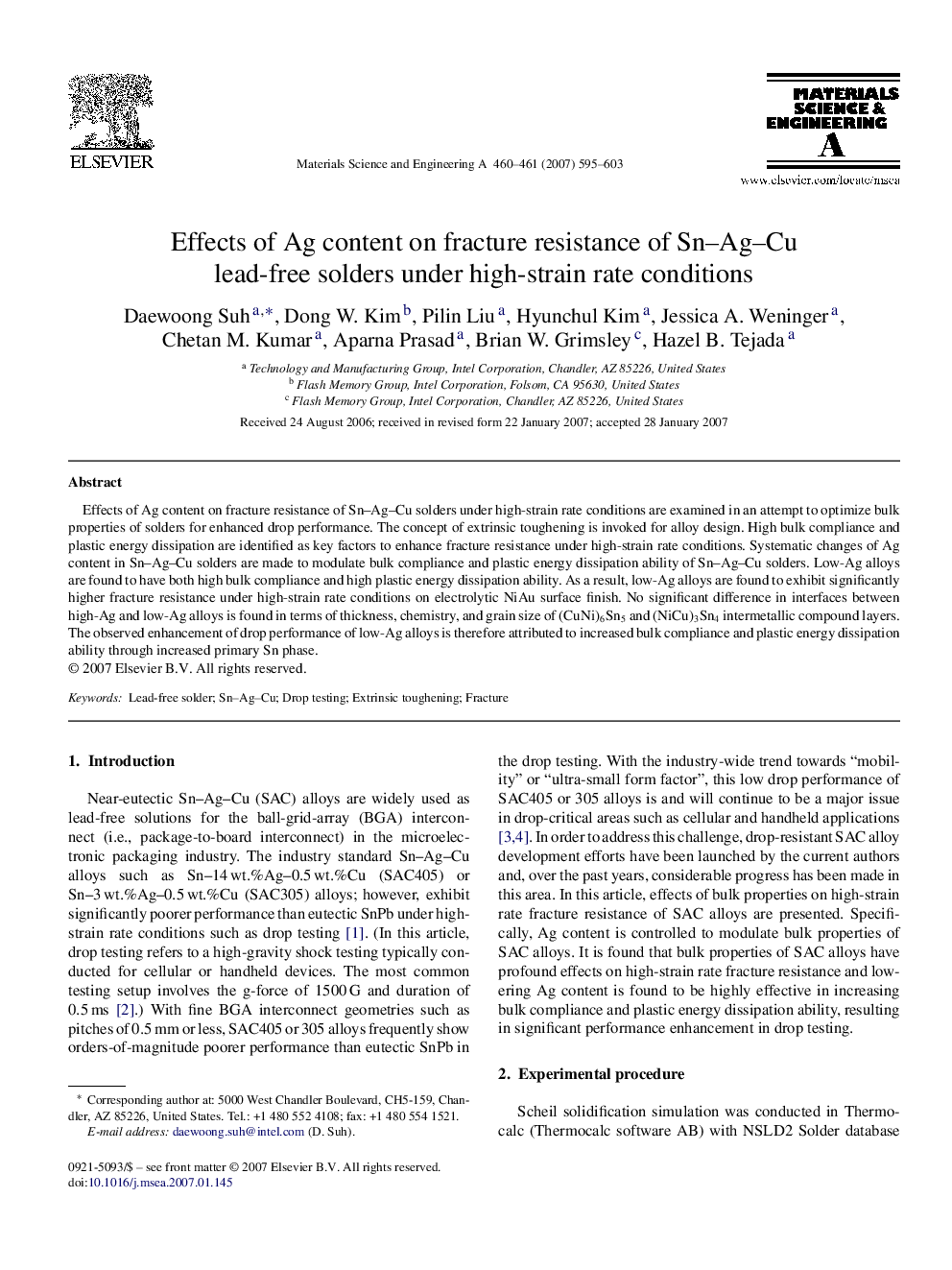| Article ID | Journal | Published Year | Pages | File Type |
|---|---|---|---|---|
| 1583615 | Materials Science and Engineering: A | 2007 | 9 Pages |
Abstract
Effects of Ag content on fracture resistance of Sn-Ag-Cu solders under high-strain rate conditions are examined in an attempt to optimize bulk properties of solders for enhanced drop performance. The concept of extrinsic toughening is invoked for alloy design. High bulk compliance and plastic energy dissipation are identified as key factors to enhance fracture resistance under high-strain rate conditions. Systematic changes of Ag content in Sn-Ag-Cu solders are made to modulate bulk compliance and plastic energy dissipation ability of Sn-Ag-Cu solders. Low-Ag alloys are found to have both high bulk compliance and high plastic energy dissipation ability. As a result, low-Ag alloys are found to exhibit significantly higher fracture resistance under high-strain rate conditions on electrolytic NiAu surface finish. No significant difference in interfaces between high-Ag and low-Ag alloys is found in terms of thickness, chemistry, and grain size of (CuNi)6Sn5 and (NiCu)3Sn4 intermetallic compound layers. The observed enhancement of drop performance of low-Ag alloys is therefore attributed to increased bulk compliance and plastic energy dissipation ability through increased primary Sn phase.
Keywords
Related Topics
Physical Sciences and Engineering
Materials Science
Materials Science (General)
Authors
Daewoong Suh, Dong W. Kim, Pilin Liu, Hyunchul Kim, Jessica A. Weninger, Chetan M. Kumar, Aparna Prasad, Brian W. Grimsley, Hazel B. Tejada,
